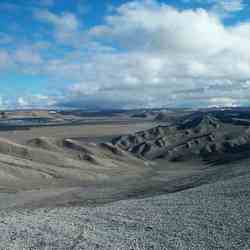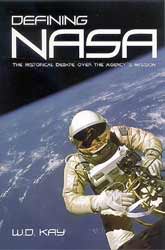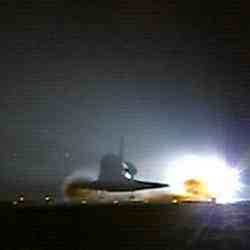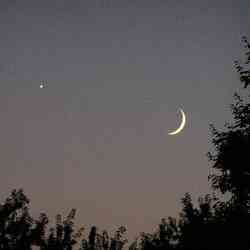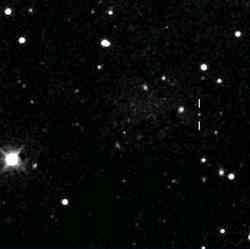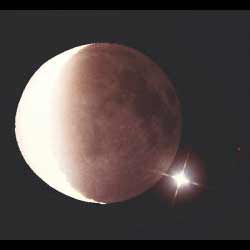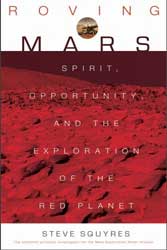
Looking down on Earth. Image credit: NASA Click to enlarge
A number of hypotheses have been used to explain how free oxygen first accumulated in Earth’s atmosphere some 2.4 billion years ago, but a full understanding has proven elusive. Now a new model offers plausible scenarios for how oxygen came to dominate the atmosphere, and why it took at least 300 million years after bacterial photosynthesis started producing oxygen in large quantities.
The big reason for the long delay was that processes such as volcanic gas production acted as sinks to consume free oxygen before it reached levels high enough to take over the atmosphere, said Mark Claire, a University of Washington doctoral student in astronomy and astrobiology. Free oxygen would combine with gases in a volcanic plume to form new compounds, and that process proved to be a significant oxygen sink, he said.
Another sink was iron delivered to the Earth’s outer crust by bombardment from space. Free oxygen was consumed as it oxidized, or rusted, the metal.
But Claire said that just changing the model to reflect different iron content in the outer crust makes a huge difference in when the model shows free oxygen filling the atmosphere. Increasing the actual iron content fivefold would have delayed oxygenation by more than 1 billion years, while cutting iron to one-fifth the actual level would have allowed oxygenation to happen more than 1 billion years earlier.
“We were fairly surprised that we could push the transition a billion years in either direction, because those levels of iron in the outer crust are certainly plausible given the chaotic nature of how Earth formed,” he said.
Claire and colleagues David Catling, a UW affiliate professor in atmospheric sciences, and Kevin Zahnle of the National Aeronautics and Space Administration’s Ames Research Center in California will discuss their model tomorrow (Aug. 9) in Calgary, Alberta, during the Geological Society of America’s Earth System Processes 2 meeting.
Earth’s oxygen supply originated with cyanobacteria, tiny water-dwelling organisms that survive by photosynthesis. In that process, the bacteria convert carbon dioxide and water into organic carbon and free oxygen. But Claire noted that on the early Earth, free oxygen would quickly combine with an abundant element, hydrogen or carbon for instance, to form other compounds, and so free oxygen did not build up in the atmosphere very readily. Methane, a combination of carbon and hydrogen, became a dominant atmospheric gas.
With a sun much fainter and cooler than today, methane buildup warmed the planet to the point that life could survive. But methane was so abundant that it filled the upper reaches of the atmosphere, where such compounds are very rare today. There, ultraviolet exposure caused the methane to decompose and its freed hydrogen escaped into space, Claire said.
The loss of hydrogen atoms to space allowed increasingly greater amounts of free oxygen to oxidize the crust. Over time, that slowly diminished the amount of hydrogen released from the crust by the combination of pressure and temperature that formed the rocks in the crust.
“About 2.4 billion years ago, the long-term geologic sources of oxygen outweighed the sinks in a somewhat permanent fashion,” Claire said. “Escaping to space is the only permanent escape that we envision for the hydrogen, and that drove the planet to a higher oxygen level.”
The model developed by Claire, Catling and Zahnle indicates that as hydrogen atoms stripped from methane escaped into space, greenhouse conditions caused by the methane blanket quickly collapsed. Earth’s average temperature likely cooled by about 30 degrees Celsius, or 54 degrees Fahrenheit, and oxygen was able to dominate the atmosphere because there was no longer an overabundance of hydrogen to consume the oxygen.
The work is funded by NASA’s Astrobiology Institute and the National Science Foundation’s Integrative Graduate Education and Research Traineeship program, both of which foster research to understand life in the universe by examining the limits of life on Earth.
“There is interest in this work not just to know how an oxygen atmosphere came about on Earth but to look for oxygen signatures for other Earth-like planets,” Claire said.
Original Source: UW News Release

